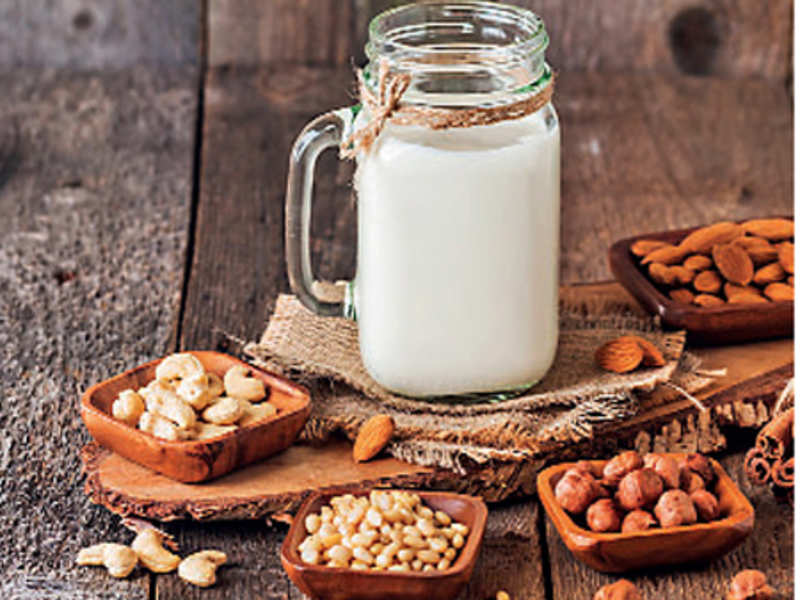Reasons why people should avoid cow’s milk

If you still have doubts that milk really has a bad effect on the human body, the following scientifically proven studies should dispel all doubts.
Since the slogan “meat and milk make you sick” clearly does not contribute to the successful sale of these products, meat and dairy producers make every effort to ensure that such information does not reach the consumer.
All kinds of marketing strategies try to make us believe that milk is a magic beverage that makes teeth, bones and skin healthy, but in fact it has the opposite effect. Cow’s milk is good only for calves, which are nowadays cruelly left without breast milk.
Americans consume large quantities of dairy products – an average of 272 kg per person per year. It is interesting to note that humanity has not always consumed dairy products (including cow’s milk) – only for the past 7500 years (and human existence has been in existence for 200,000 years).
Nutrition experts, scientist and doctors do not recommend eating dairy products, as they are associated with various serious health problems.
Even organic milk contains hormones
Dairy products contain a lot of female hormones. Cow’s milk sold in stores contains a lot of estrogen and progesterone, which is a serious problem. This is mainly due to the fact that cows are forced to produce milk constantly, even in the case of repeated production of offspring.
These hormones are also found in dairy products that have “organic” or “hormone-free” labels on their packaging because the cow’s body produces them herself (even if she has not been given additional hormones).
In blood and urine, both adults and children, the use of milk increases the amount of estradiol and progesterone, and the increase in the amount of estradiol circulating in the blood is also associated with the use of dairy products. Studies have shown that men who drink milk digest the estrogen in their milk, which significantly increases testosterone production.
Pediatricians sound the alarm about estrogen levels in cow’s milk, as excessively early puberty at puberty age can be is due to the consumption of milk.
Numerous scientific studies confirm that the use of milk can be one of the risk factors for hormone-dependent malignant diseases (including ovarian, uterine, breast, testicular and prostate cancer).
Casein in dairy products increases the risk of cancer
Casein, which contributes to the development of cancer, is the main protein contained in dairy products. It has been suggested that it is more effective to control the development of cancers through low casein diets than to avoid carcinogens.
The insulin-like growth factor (IGF-1), a hormone that promotes the reproduction and division of both normal and cancerous cells, is responsible for this connection. The IGF-1 content in food is regulated, and the consumption of animal protein (including casein in dairy products) increases the amount of this cancer-causing hormone in the blood.
It is for this reason that consumption of casein (and animal protein in general) in milk is associated with cancer and its spread.
Higher risk of developing type I diabetes and multiple sclerosis
The human immune system protects the body from microbes and other harmful substances, but if it is unable to recognize and distinguish between harmful substances and normal tissues and cells, it can start attacking our own body.
Such automatic attacks cause contact with foreign peptides (including fragments of animal protein contained in milk) that are similar to human body components. The immune system is confused and no longer recognizes its own tissues and begins to attack them.
Dairy products are associated with all kinds of immune system disorders (from allergic reactions to autoimmune diseases). The association with type I diabetes and multiple sclerosis is of particular concern. In the case of type I diabetes, i.e. in case of diabetes mellitus, the immune system attacks the pancreas, so that it is no longer able to produce enough insulin to regulate the amount of glucose in the body.
Numerous scientific studies confirm the connection between the consumption of cow’s milk and type I diabetes. One study found that cow’s milk may contain a substance that causes this type of diabetes, and another study found that eating cow’s milk increases the risk of type I diabetes by a factor of 1.5.

Multiple sclerosis causes the human immune system to attack its own nervous system. As with type I diabetes, those who are used to drinking cow’s milk have a higher risk of developing multiple sclerosis.
Even pasteurized milk contains dangerous microorganisms
Because of their microbial content in milk and dairy products, they are one of the main agents of disease through food. Even when modern hygiene requirements are met (including pasteurization and aging), there may be incidents with severe consequences.
Salmonella, listeria and colibacillus are the most known bacteria present in dairy products and cause diseases. Last year, three people died in the United States of America from having been infected with listeria through Blue Belli ice cream, and the company was forced to withdraw the entire shipment of goods.
The U.S. Veterinary and Food Department does not require milk to be completely sterile after pasteurization. Milk is brought to high temperatures in order to reduce its microbial content.
Dairy products contain large quantities of pesticides
Dairy products are also associated with organochlorine pesticides. Plant protection products mainly contaminate water and agricultural land, but due to their high fat content, dairy products tend to accumulate large amounts of pesticides.
Milk products are still tested for pesticide content that has long been banned. Unfortunately, there are still some organochlorine pesticides in the environment (such as DDT, which used to be widely used and now is considered carcinogenic and banned) and they are present in animal foods, including dairy products.
In India, milk and other dairy products, such as cheese and butter, have been found to contain the most food-borne DDTs and hexachlorocyclohexane (HCH). A routine inspection revealed that milk produced in Italy on dairy farms in the Sacco Valley had a ß-HCH level that was 20 times higher than the permitted level.
Antibiotic residues
Herd animals are the largest consumers of antibiotics in the world. But the drugs are used primarily not for disease treatment, but to prevent infections and increase animal growth (the latter is prohibited in the European Union).
Despite scientists’ warnings that excessive use of antibiotics causes resistance (immunity) and their content in milk is being minimized by law, traces of antibiotics are still found in milk and dairy products.
Their presence in milk is difficult to prevent and control, as milk from single cows and farms is mixed into a single mass, and the use of drugs on different dairy farms may vary. Although the antibiotic content of milk is low, its presence can cause numerous problems, ranging from resistance to allergic reactions.
Dairy products cause bone brittleness
This may seem unexpected, but milk does not really have a positive effect on the bones. There have been many studies that disprove the outdated notion that milk makes bones strong. On the contrary, eating milk increases the risk of bone brittleness.
This has its reasons.
For example, milk contains a large amount of calcium, which removes vitamin D from the body and thus disrupts homeostasis (self-regulation of the system) in the bones. In addition, animal protein contained in milk can cause acidosis (a shift in the acid-alkali balance towards acidity), and in order to neutralize the increased acidity, the body compensates for this by removing calcium from the bones.
If this process takes place over a long period of time, it can have irreversible consequences for the condition of the bones.
Although other factors (e.g. physical activity) influence bone health, it should be noted that in the US, where milk is consumed quite a lot, hip fractures are more common than anywhere else in the world. However, in Japan and Peru, where calcium is consumed only 300 mg per day (i.e. less than one-third of the recommended amount for adults in the US), bone fractures are rare.
